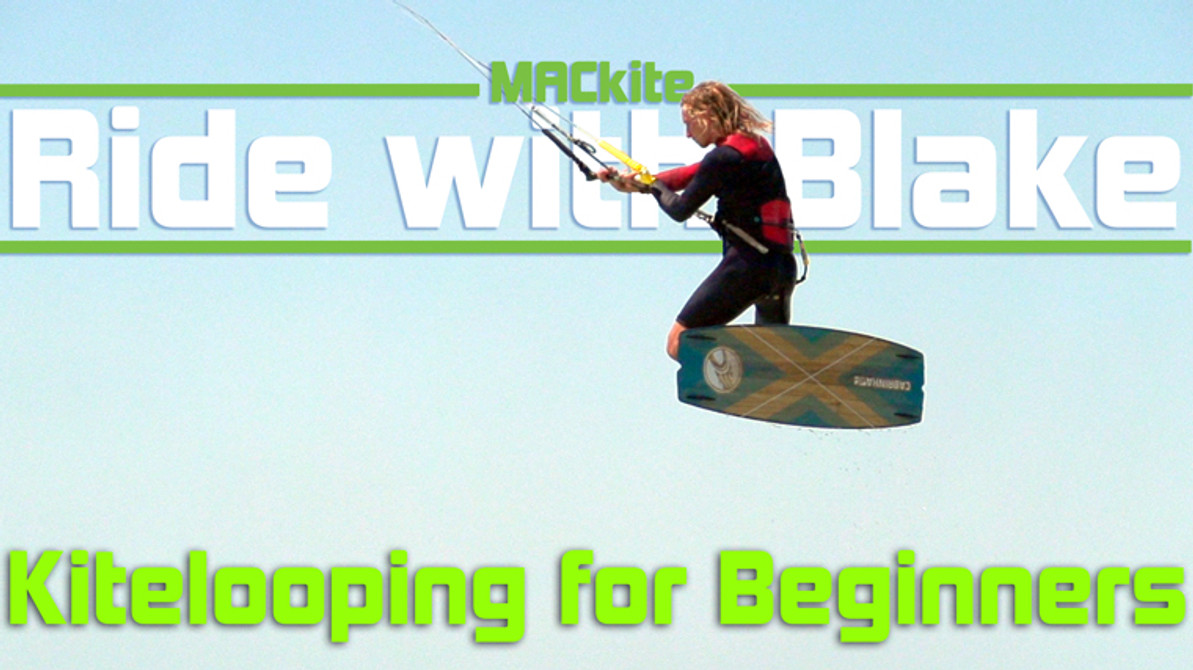Ride with Blake | How to Kiteloop
Today we are going to be learning a really fun, scary and feel good trick. This trick takes it to the next level in kiteboarding, and whether you are a beginner, intermediate or advanced rider this is a trick you should learn someday. The feeling of going up and then flying horizontally through the air is something you can’t do in any other board sport. It gives you a pure and ultimate adrenaline rush and it’s what pushes the limits in our sport of kiteboarding.
I’m sure you’ve all seen or heard of Red Bull King of the Air, it’s an insane and absolutely mind blowing competition with the best riders in the world. Watching that kind of level makes you feel like you should never try a kite loop but let me reassure you that it’s easier that you would think. Before you try this trick make sure to watch our previous videos on how to Downloops.
Printable steps for the beach
A few Prerequisites
First practice downloop transitions, then jumping with a Downloop.
This will give you the concept and feeling without the danger of catching your kite in the power zone. An important thing to think about before going for a kite loop is to make sure that you have the right kite for looping. There are certain kites that are not designed for looping it and will result in hard crashes giving you little success. For instance the Cabrinha Apollo is not a kite that you want to learn how to kiteloop with. I had a 10m Apollo and although it would loop the way the kite flew it was not designed for that trick and never ended very well. Once you learn downloops with jumps it will change the way you do tricks and give you a larger wind window to work with. So once you have those mastered you are ready to try your first kiteloop!
Step One: Practice without a board
The easiest way to learn your kiteloops is to simply avoid the risk of injury by ditching the board. This way you get the feeling of looping the kite without any consequences, and can break that mental block. First off practice looping the kite while body dragging, getting comfortable looping it both ways. Once you have perfected this, switch to a strapless board or loosen your feet in the straps. Practice riding into a jump, ditching your board and looping the kite without a board on your feet. This will work out the kinks of landing, when to loop the kite, and it’’s actually quite fun. It’s like you are playing a game of human darts.
Step Two: Ride Down Wind
This step is pretty simple. Just practice doing back loops with your kite and simply ride downwind at the kite. You don't have to jump or anything on this step, just get used to the direction and pull of the kite. You can also use a smaller kite and as you get comfortable do little pops with the kiteloop. This step is about taking it slow and building confidence. The key is to not edge against the kite while looping to avoid any hard wipeouts.
Step Three: Timing
One of the most important parts of the kite loop is timing. You need to pull the loop right before you reach the peak of your jump. You don’t want to pull too early because it will send you hard downwind and not give the kite enough time to catch you. If you pull the bar too late as you are coming down from your jump, it may result in a downloop or the same as pulling to early and send you crashing down hard into the water. The idea behind looping the kite right before reaching the apex of your jump is that after completing the loop the kite will catch you before starting your decent. Timing with a kite loop just like any other trick is very important.
Step Four: Pull hard on your back hand and hold
The act of looping the kite requires timing and the right pull of the bar. Your kite responds to how hard you pull on the bar. The way it turns is by the shortening of one line and the lengthening of the the other. The shorter one line the harder and faster it will turn. In order to make sure that your kite has a tight, fast and clean loop is to make sure that you pull hard on the bar. (Give an example in the video between pulling hard and not pulling hard enough). So before you reach the apex of your jump pull the bar hard in on your back hand and hold it until you see the kite make a complete loop.
Step Five: Sheet out after you have completed the loop
So now you have completed your kiteloop which is actually the easy part. The hardest part of this trick like i said earlier is timing and also the landing. You want to sheet out on the bar so the kite acts as a parachute and catches you on your way down. If you hold in on the bar your kite with stay powered and send you crashing hard down towards the water. Sheeting out opens the canopy of the kite and creates lift by making the kite fly above you. It’s like when a paraglider comes down for landing and pulls in on the handles. What happens when you keep the bar pulled in is that the kite keeps scooping wind in the power zone and continues to pull you downwind after the loop. A kiteloop can generate G force so if you have that amount of force pulling you and the kite doesn’t catch you it can result in a very powerful impact. Jump, loop, and sheet out.
Step Six: Keep the kite moving
After you sheet out and feel the kite catch you, now is the time to continue steering the kite. If you simply leave the kite at 12 you will swing underneath it and drop like a rock. Whichever side of the wind window you want to land is the direction in which you want to direct your kite. Pull back in on the bar and get the kite moving in the direction you want to go. Sometimes it is easier to do another loop at the edge of the window to catch yourself. This is a little more complex but if you have gotten comfortable with jumping and downloops then you will be able to manage. Remember that as you land any trick you want to have the kite falling down with you and the bar sheeted out. Right before you touch down is when you pull in on the bar to catch yourself.
Step Seven: Land with the board flat and downwind
Just like any other trick it is crucial to land with your board flat and pointing downwind, especially with kiteloops. Even if your kite doesn’t catch you, which will happen as you learn this trick landing flat and downwind will allow you to absorb the impact with your knees and not smack the water. Think of an airplane coming in for landing. You come down fast at a gradual decline, wings straight so that the wheels touch down flat on the tarmac, right before you touch down pull back to come down softly. If one wing is more angled than the other then it will crash before the wheels have a chance to catch the plane. The same is true for your body and the your body weight coming down onto the water.
Closing:
I would recommend practicing slightly underpowered on a 6-12m kite. The reason you want to learn to loop on a smaller kite is because of the speed of the kite. If you are using a bigger kite it takes longer to make the loop around and catch you.
A twelve meter is quite a large kite to loop on but if you are practicing in light winds you can make it work. Depending on the conditions it would be easier to practice looping underpowered on a 10m than a 12m because it will catch you sooner. The reason you go out underpowered to start is that the consequences are less when the wind is light and the kite is small.
Practice a small jump and right before reaching the peak pulling hard on the bar and looping it. Remember to have fun while trying this and make sure you can visualize yourself doing this trick before attempting it. If you can see yourself doing a trick before going out the likelihood of actually landing it will be far greater.
Also if you are in a location where there are other people doing kite loops, watch them for a while so that you can see what it looks like. Pay close attention to the kite, the bar and when they pull the loop.
Hope that helps and enjoy the rush of one of the most exciting tricks in kiteboarding!
 Blake Olsen
Blake Olsen
A Michigan boy through and through (even though he was born in Saudi Arabia), Blake is a youth with a lifetime of experiences and adventures. Not only that, he's passionate about sharing his zest for life with others. He is proficient at many fields, including kiteboarding and acting as concierge to any who simply ask. Looking for an adventure? Well, Blake is your guy. From sailing the Gulf and the Caribbean to backpacking Hawaii and Southeast Asia, he knows his stuff and can make your vacation into an adventure.
Webpage:
BlakeTheOlsen.com
Instagram:
@BlakeTheOlsenFacebook: BlakeOlsen
Recent Posts
-
North Navigator Pro Quick Release | How to Swap Yours Out With Ease
What You Need Before starting the replacement process, ensure you have all the necessary t …18th Apr 2024 -
Foil Drive | Essential Tips to Supercharge Your First Session
The Foil Drive makes your foiling life easier. You'll get up easier and catch more waves, …17th Apr 2024 -
2024 Duotone Slick Wing Review | What's New in This Year's Model?
The Duotone Slick has been a favorite of many for several years. Pros love it for its speed, …15th Apr 2024




